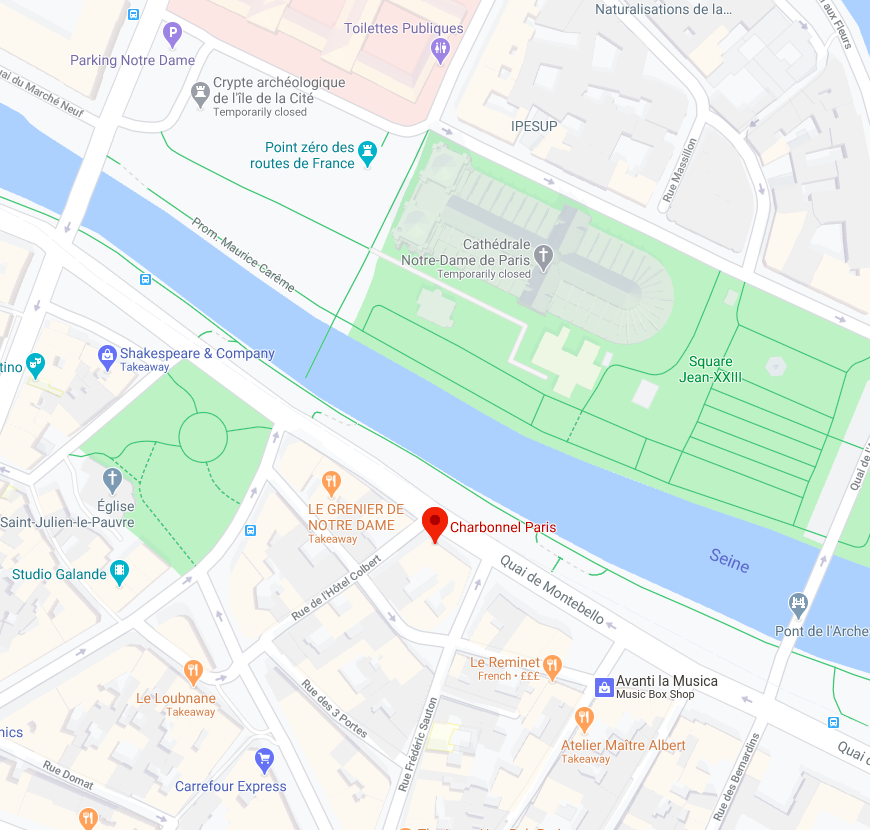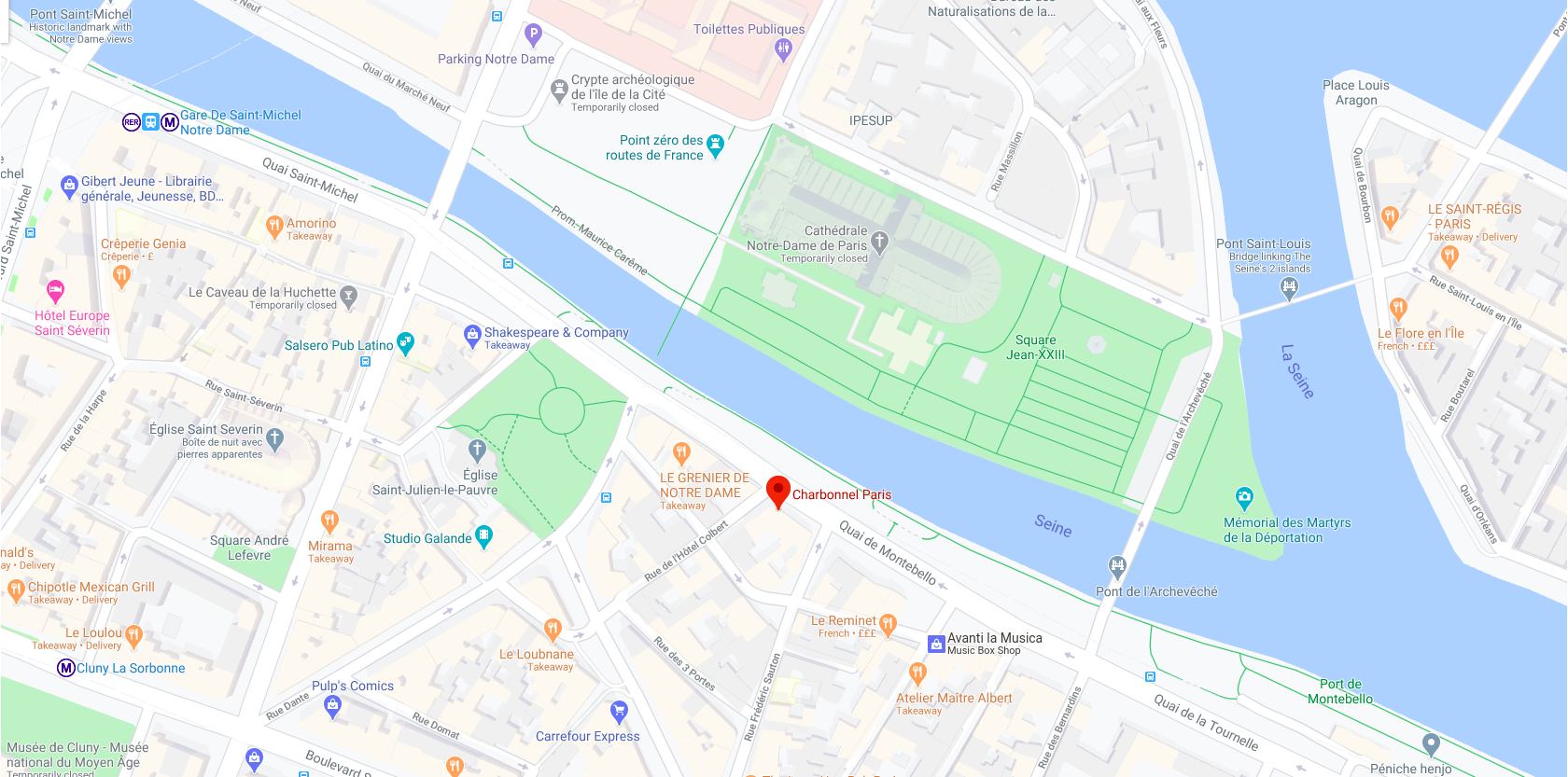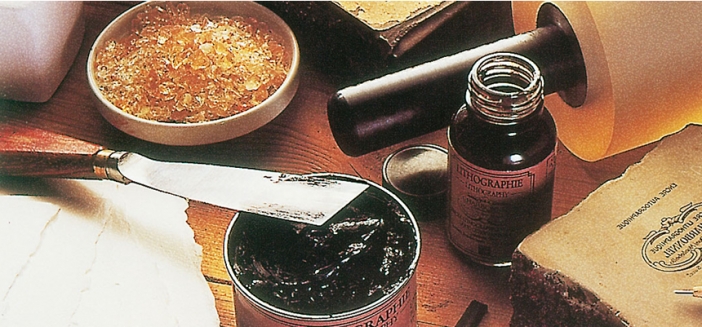
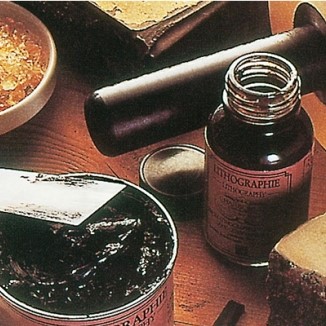
Lithography
Lithography is a traditional printing technique born with the discovery of the printing potential of stone.
Discover the rangeWhat is lithography?
In 1796, German writer Aloïs Senefelder gave birth to lithography with the discovery of the printing potential of stone. This new process made it possible to print a much wider range of marks and tones than could be achieved with earlier relief printmaking and intaglio methods.
Lithography involves drawing an image on a lithography stone with a waxy medium. This is then treated to make certain areas water-repellant. Water-repellant areas do not receive the ink. After the stone has been properly prepared, it is pressed to print ink on the paper.
We have been supplying lithographic materials for artists and workshops since our shop first opened in 1862. To date, we continue to widen our lithography range to cover every stage of the process, from the preparation of the stone, to drawing, printing and preservation.
Lithography: the process
Lithographic pencils, crayons and inks, tusche and printing papers: discover the process and the tools needed for lithography.
Lithography is based on the fact that grease and water don’t mix, and instead repel. It involves drawing an image onto a stone surface with a grease-rich medium, such as an ink called tusche or a waxy crayon. This grease is absorbed by the top layer of the stone.
A solution of gum arabic and nitric acid is then applied to the stone surface, which penetrates into the areas that aren’t protected by the oil-based image. This creates a water-repellant layer. It means that when printed, only the areas of the stone covered in wax receive the ink and print.
After this, grease-based material is cleaned off the image surface, allowing it to be water-receptive. It is then wetted and a greasy ink is applied with a roller. The ink adheres to the applied oily marks but is repelled by the water found in other areas of the surface. The ink is then transferred onto the paper sheet using a press, producing a printed image.
There are many variations on this technique, including mono and colour techniques.
Litho drawing
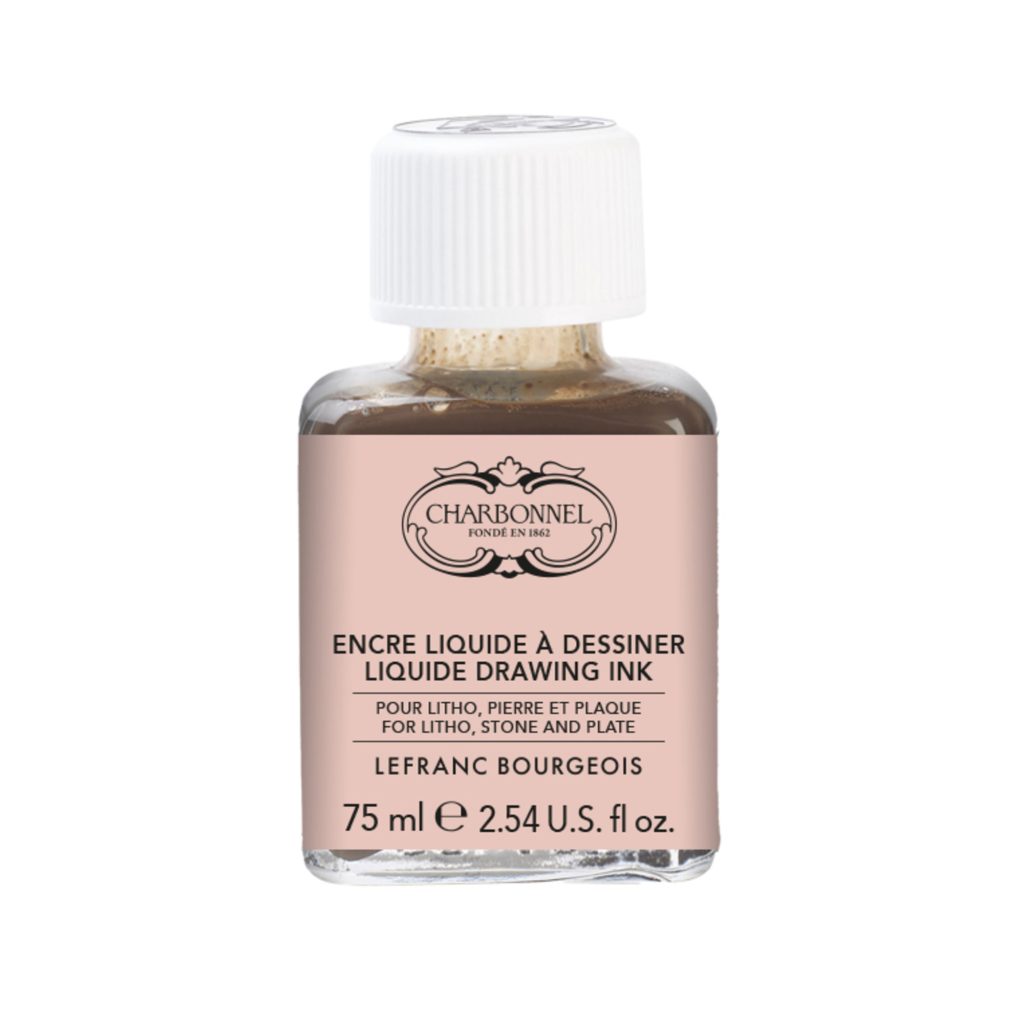
Many different instruments are used to create lithographic images, including lithographic pencils, crayons and inks. All of these tools are made from grease-rich substances and create slightly different effects.
Corrections can be made to lithographic images with dedicated tools including cat’s tongue scrapers, burin-shaped scrapers and corrective crayons.
Some of these drawing materials are also used in etching.
Litho Crayons & Pencils
Lithographic crayons and pencils are grease-rich instruments used to draw images on stone. They are typically square or barrel-shaped sticks that resemble pencil leads. They are often made from materials including white wax, soap, lac, lamp black and the hardest substance, copal.
When choosing your litho crayons & pencils you can pick various degrees of hardness. Grades are usually from Copal & No1 to No5.
No5s contain the most grease and are the softest pencils. They produce rich, smoky black lines. Copal & No1s are the hardest pencils and produce light, fine tones.
The edge of each crayon can be used to draw straight and fine lines. You can sharpen the hardest grade pencils with a pencil sharpener or polisher. The softest can be used with a holder to prevent them from melting in your hand.
We offer six different crayon graduations from No1 to No5 (No5 is the most greasy) and a very dry, hard copal crayon, plus a holder. Our Stone Tablet Crayons make it possible to execute broad flat tints while maintaining the classic crayon texture.
Litho Tusche
Litho ink is called tusche and is made of a water-based solution of grease & pigment. Tusche can be further diluted in distilled water and used with a pen or as a wash.
Litho tusche is available as liquid ink, solid sticks and in tablets for rubbing. We make high grade, acid resistant formulas with finely dispersed pigment. Our tusche sticks require diluting with distilled water before use, while the classic tusche can be used in its liquid form.
Corrective Crayons & Scrapers
Lithographic artists use a range of corrective tools to touch up their drawings and to completely remove ink and crayon from stone surfaces. Tools include cat’s tongue scrapers, burin-shaped scrapers and corrective crayons, also known as snake slips.
Scraping knives traditionally have wooden handles and are available in a choice of blade designs. Both our cat tongues and burin-shaped scrapers are available in six different blade options, from the No1 to No6 blade.
Charbonnel Corrective Crayon is made from highly abrasive pumice with a sharply chiselled end for fine detail work.
Printing inks & additives
Litho roll-up inks are printing inks which are designed to carry out direct transfer from stone.
Charbonnel offers three types of black inks, black crayon litho, black drawing litho and black velvet litho. All have their own unique characteristics.
Additives can be used to alter their rendering by changing each ink’s consistency, either making them more transparent, fluid or thicker. Preservation ink is used to protect the image on a mother stone once printing is complete.
Inking rollers
To achieve a perfectly inked lithographic stone, lithographic artists use a range of rolling tools in various widths and densities. We offer polyurethane rollers in widths from 20 to 50 cm and in two different hardness levels. These are available as solo heads with separate holders, or as complete rollers.
Printing papers
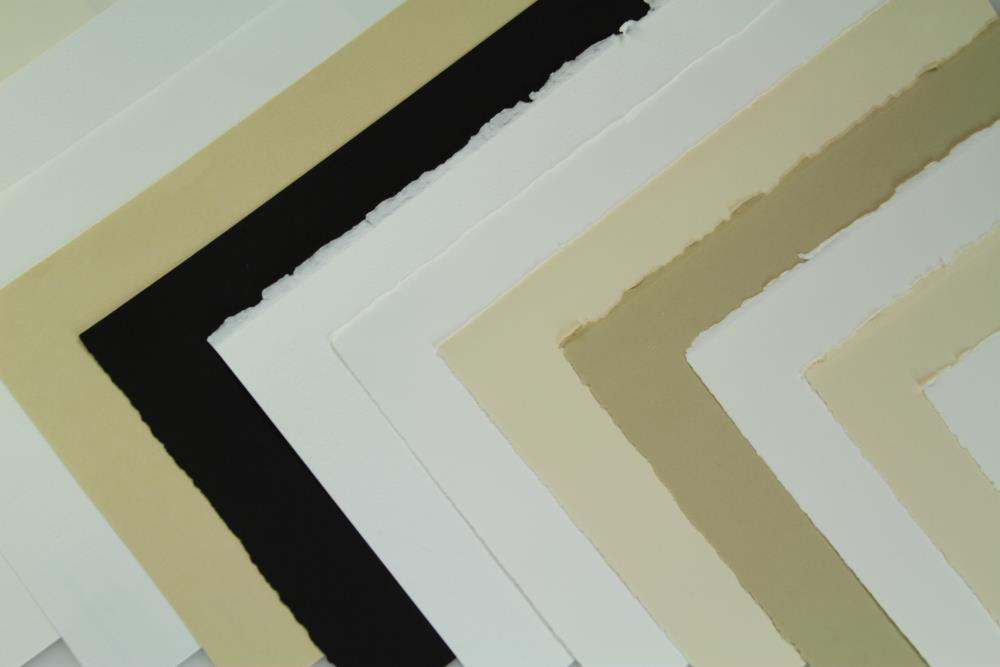
Find the right paper for lithography
For the final image, your choice of paper is as important as the ink. There are a wide range of paper weights, absorbencies, compositions, thicknesses, colours and finishes available to match your needs.
All paper used in lithography must be able to withstand the compression of the press and needs to be very elastic and strong. The paper you choose should have a soft, unfinished and uncoated surface. To ensure the longevity of your print, it should also be resistant to degradation and ageing.

